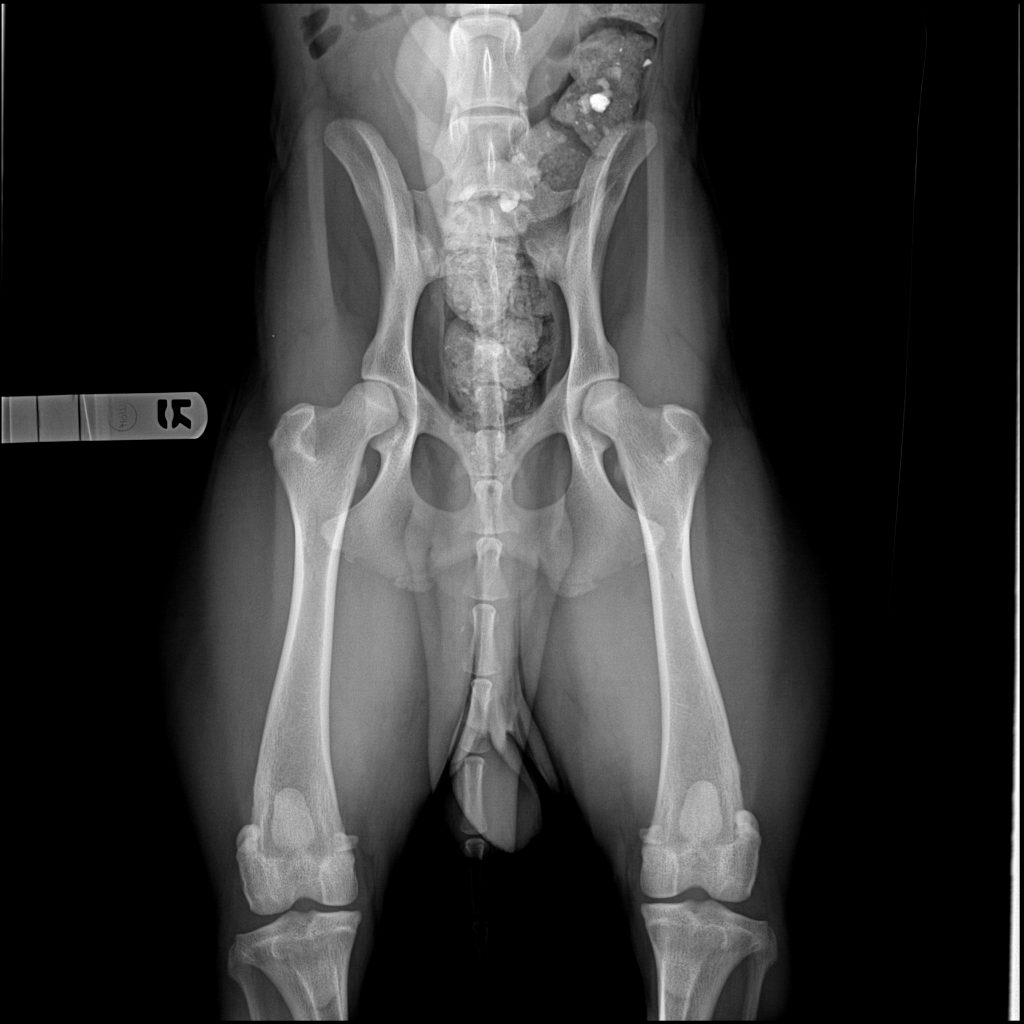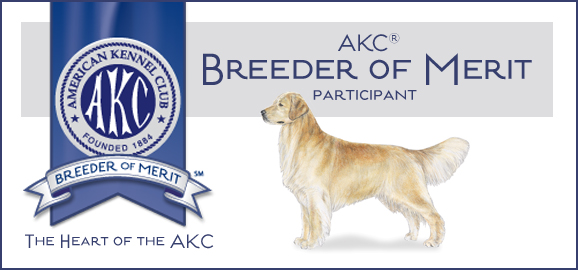There are exponentially increasing numbers of breeders of imported lines of Golden Retrievers who have useless misleading FCI hip clearances. These breeders are portraying these clearances as final when they are not. Not only are they not considered final (even in Europe), they are not what the breeders are trying to lead people to believe.
Ironically the vast majority of these breeders claim that their clearances are equivalent to an OFA “excellent”. People looking for a puppy are impressed with the number of excellent hips that are in these breeder’s programs. This looks especially impressive because Golden Retrievers are a breed where the statistics say that 20% are dysplastic. Further, this 20% statistic would be much worse if not for the fact that almost all of those being tested by OFA are from the good breeders who are weeding out the failing dogs from their program.
Breeders who have misleading FCI clearances often credit these good scores to the lines in their program. Many of these breeders claim that their dogs are in the top 4% of Golden Retrievers (because that is what OFA’s site says for those dogs who indeed have final OFA (2 year) excellent hip clearances).
How can there be so many breeders who own dogs with hip scores equivalent to an OFA excellent when the statistics or so low? The answer to this question is that there aren’t! This article is going to discuss what these bogus FCI hip scores actually are.

Most (almost all) Goldens in the U.S. With FCI Hip Clearances are Tested Prior to Their First Birthday and then Exported to the U.S.
For FCI clearances to be considered final clearances in Europe, the dog must be at least 1 1/2 years of age. When a final clearance is obtained, it goes on the dog’s pedigree and the dog is allowed to be bred and the breeder can register the puppies with FCI. FCI is in a sense the European version of AKC except for one big difference. FCI has more regulatory power than AKC. Without clearances for the parents, a litter cannot be registered in Europe.
A Little About BVA
As a side note, BVA is the agency in England that registers and regulates breeding in England. Many breeders in Western Europe use BVA instead of FCI. Breeders in Australia also use BVA as do some breeders in the U.S. I have no problem with breeders using BVA. BVA provides very useful information. However, just like with FCI, many breeders are misleading people as to how BVA and OFA compare. Read more about BVA on our page on Hip Dysplasia in Golden Retrievers. BVA has many good uses whereas, I see VERY few dogs in the states legitimately tested with FCI.
Full Clearances Only On Dogs Over 1 1/2 Years of Age
For full clearances with FCI, dogs must be over 1 1/2 years of age. However, breeders can go to their own vet and get a preliminary clearance at any age they like. Breeders in Europe think that in the U.S. any age is fine. And it is, to some extent, because we in the U.S. only have guidelines for breeding and health testing. There are no actual rules that keep breeders from registering a litter and there is nothing to keep them honest.
Raising a dog until they are two to find out if they pass health testing is risky. More than half the dogs that we at Summer Brook initially imported failed on something health wise. Sadly, this is the norm! I’ve talked to many other good breeders who have said the same thing. Just think of how tempting it might be for someone with low morals (or for someone who is uneducated) to import dogs that already had clearances (whether they are valid or not!).
So, why does it matter how old the dog is? Because hip dysplasia is a progressive disease. A puppy under a year old may have hips that look normal when he is younger. Then as he gets older, those same hips might begin to deteriorate.
Why FCI Hip X-rays Done Prior to a Year are not Conclusive in Europe
We do not import dogs with FCI hip testing that was done prior to a year old. This has become a very common practice in recent years with the imports. These misleading FCI x-rays done on puppies are done by a European breeder’s personal vet. Then these older puppies are imported to the U.S. American breeders then post these results as final.
Hip dysplasia is prevalent in Golden Retrievers in both American Goldens as well as English Goldens. Therefore, having reliable hip testing done on breeding dogs is very important. Further, it is important that x-rays are done after the dog is finished growing.
Hip Dysplasia is Progressive
Hip dysplasia is a progressive condition. Hips x-rays done prior to when a dog is over a year are not definitive (unless there is a severe problem). Therefore, x-rays done on puppies have minimal value, even when evaluated by a certified veterinary radiologist. However, to compound the problem with age, these breeders are having their x-rays evaluated by their own personal vet.
Most vets (even here in the U.S.) lack skills in reading hip and elbow x-rays. They can probably recognize severe hip or elbow dysplasia, but few are able to accurately recognize the differences between a good hip or elbow and a mildly dysplastic one. Further, not all vets are honest. The foreign vets are being paid by their breeder. What’s to stop them from recording an x-ray as representing a good hip when it is actually mildly dysplastic (even if they recognize it)?
No Consistency With Regard to Who Evaluates and Scores in Eastern Europe
When a vet takes an x-ray for an OFA evaluation, the vet does not evaluate the x-ray. He sends it to OFA where a group of veterinary radiologists evaluate it and give it a score. The same is true with BVA.
However, there is no such group of radiologists for FCI x-rays. Instead, the same vet that takes the x-ray, gives the score. Therefore, there is no consistency with regard to how hips (and elbows) are scored. Breeders will be inclined to go to the vets who give the highest scores!
Misrepresentation of How FCI Compares to OFA
Almost all breeders who have these bogus FCI hip scores will tell you than an FCI “A” is equivalent to an OFA “excellent”. This could be true, but not necessarily.
OFA has a chart on their website that equates FCI (and BVA) scores to OFA scores. (Google it. I have had links to the charts in the past. However, the links sometimes get changed.) BVA and FCI have similar charts on their sites. All of these sites will tell you that an FCI “A” is equivalent to EITHER an OFA excellent or good. This is a very broad category with very few Goldens actually having excellent hips. Therefore most of those claiming to have a dog with “A” hips that is equivalent to OFA excellent are either lying or grossly misinformed.
These breeders will say that an FCI A = OFA Excellent, FCI B = OFA Good, and an FCI C = OFA Fair. Those equivalents are wrong. The truth is that an FCI A = OFA Excellent or Good, and FCI B = OFA Fair or Borderline, and an FCI C = Mild Hip Dysplasia.
What to Do If You Want a Puppy From Parents With FCI Clearances
If reducing your chances of having a puppy that grows up to be dysplastic is important to you, check out breeders with FCI clearances by doing the following.
- Ask to see a copy of the clearances. It should have a date on it and there should also be a birth date for the dog. If the dog is under 12 months, consider this fact. The younger the dog, the less reliable the x-ray. An x-ray over a year is reliable as long as the result is actually a good or excellent. However, how do you know the standard of the vet that evaluated the x-ray? Maybe he gives all dogs an “A” unless they are really really bad?
- Be wise in what the numbers actually mean. An FCI “A” is not necessarily an excellent. There is a greater chance that it is a good than an excellent. Be wary of parents with anything but an “A”. Be wary of any breeder that exaggerates this fact. They could be exaggerating other things.
- Ask the breeder if they’d be willing to send an x-ray to OFA or BVA.
- If the breeder has an FCI clearance that was done at over 18 months and who doesn’t exaggerate the results, you may have found a good breeder!

